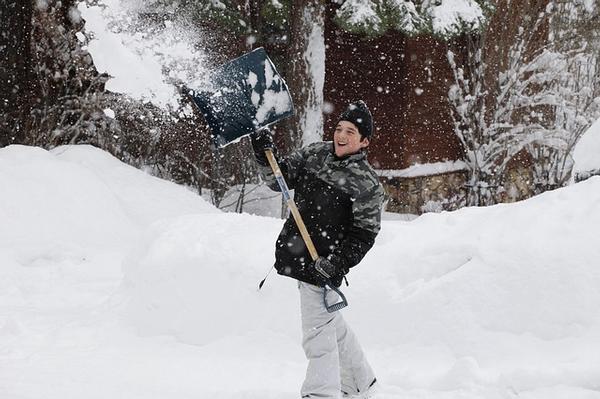Winter Landscaping 101: How to Safely De-Ice Your Pavement
November 25, 2019
When the snow starts falling, you likely feel both elation and trepidation. The fluffy white powder makes your yard look beautiful even when your plants aren’t blooming. But that same snow can make it tough to get out of the driveway and when there’s ice underneath, you’re in for a slippery drive. For most homeowners, ice melt is the easy way out—it makes shoveling snow easier and keeps your car from sliding back into the garage door. Before you reach for that bag of de-icing salt, read up on these tips to protect your landscaping.
Shovel the Snow First
No one likes spending their mornings shoveling snow off the driveway. Unfortunately, this leads many homeowners to just sprinkle ice melt on top of the powder. Not only is this not effective, but it also sends more of the ice-melt towards your landscaping when the snow does melt. Save yourself the headache by shoveling as much of the snow as possible.
Use the Right Ice Melt
Standard rock salt is the most popular and most affordable ice melt on the market, but it’s also one of the worst options for your plants. The rock salt changes the pH in the soil and can scald your grass. Unfortunately, this often results in dead patches along paved areas when the growing season starts back up.
Instead of choosing standard rock salt, look for an environmentally friendly option. Magnesium chloride, potassium chloride, and calcium magnesium acetate are all great options that will hurt your landscaping less. If you’re not sure what type of ice melt you’re looking at in the store, read the label and look for one that’s designated as plant-safe.
If You Use Rock Salt, Use It Sparingly
You can use rock salt if you absolutely can’t find anything else. But you’ll want to use it the right way. Keep the salt away from the edges of your pavement and only use the amount you absolutely have to. Using too much salt won’t speed up the melting process, but it will increase the risk to your landscaping.
For best results, spread a thin layer of salt over the pavement as evenly as possible. Let it sit for a while and monitor the progress. If you notice a particularly stubborn patch of ice or feel like you didn’t use enough, spread another thin layer.
Skip the Ice Melt Entirely
Ice melt will help get rid of ice, but you don’t have to melt the ice to make it safe to use your paved walkways and driveway. Sometimes, all you need is a little extra traction. Consider spreading a layer of sand or kitty litter over the ice. This will give your tires something to grip onto and won’t damage your landscaping even when the snow melts.
Winter weather doesn’t have to hurt your landscaping, but if it does, you don’t have to try to fix the damage on your own. Contact our Denver landscaping team and let us help you bring your landscaping back to life this spring.
Go Back Shovel the Snow First
No one likes spending their mornings shoveling snow off the driveway. Unfortunately, this leads many homeowners to just sprinkle ice melt on top of the powder. Not only is this not effective, but it also sends more of the ice-melt towards your landscaping when the snow does melt. Save yourself the headache by shoveling as much of the snow as possible.
Use the Right Ice Melt
Standard rock salt is the most popular and most affordable ice melt on the market, but it’s also one of the worst options for your plants. The rock salt changes the pH in the soil and can scald your grass. Unfortunately, this often results in dead patches along paved areas when the growing season starts back up.
Instead of choosing standard rock salt, look for an environmentally friendly option. Magnesium chloride, potassium chloride, and calcium magnesium acetate are all great options that will hurt your landscaping less. If you’re not sure what type of ice melt you’re looking at in the store, read the label and look for one that’s designated as plant-safe.
If You Use Rock Salt, Use It Sparingly
You can use rock salt if you absolutely can’t find anything else. But you’ll want to use it the right way. Keep the salt away from the edges of your pavement and only use the amount you absolutely have to. Using too much salt won’t speed up the melting process, but it will increase the risk to your landscaping.
For best results, spread a thin layer of salt over the pavement as evenly as possible. Let it sit for a while and monitor the progress. If you notice a particularly stubborn patch of ice or feel like you didn’t use enough, spread another thin layer.
Skip the Ice Melt Entirely
Ice melt will help get rid of ice, but you don’t have to melt the ice to make it safe to use your paved walkways and driveway. Sometimes, all you need is a little extra traction. Consider spreading a layer of sand or kitty litter over the ice. This will give your tires something to grip onto and won’t damage your landscaping even when the snow melts.
Winter weather doesn’t have to hurt your landscaping, but if it does, you don’t have to try to fix the damage on your own. Contact our Denver landscaping team and let us help you bring your landscaping back to life this spring.
